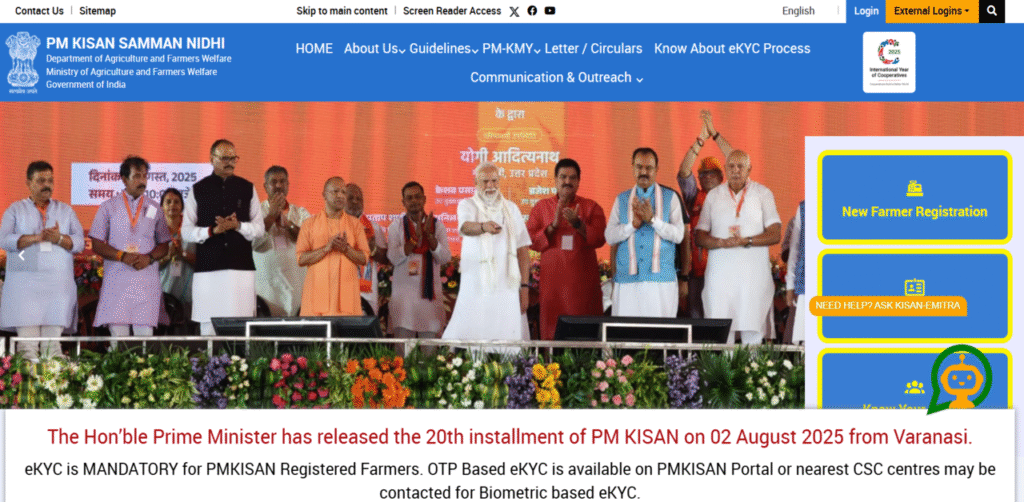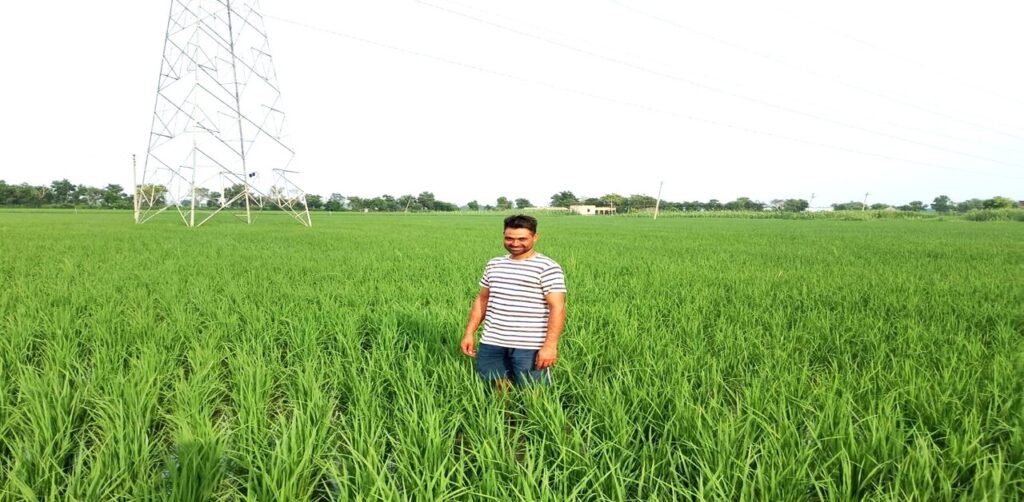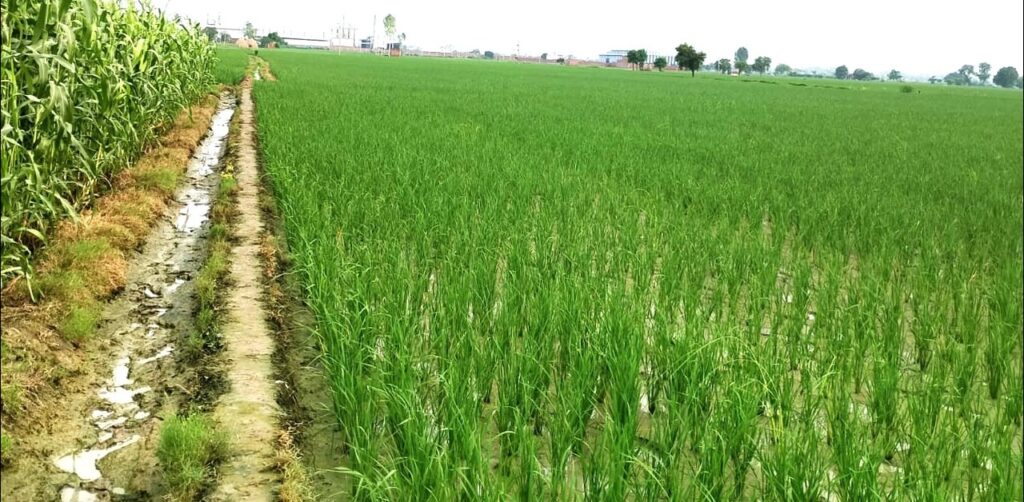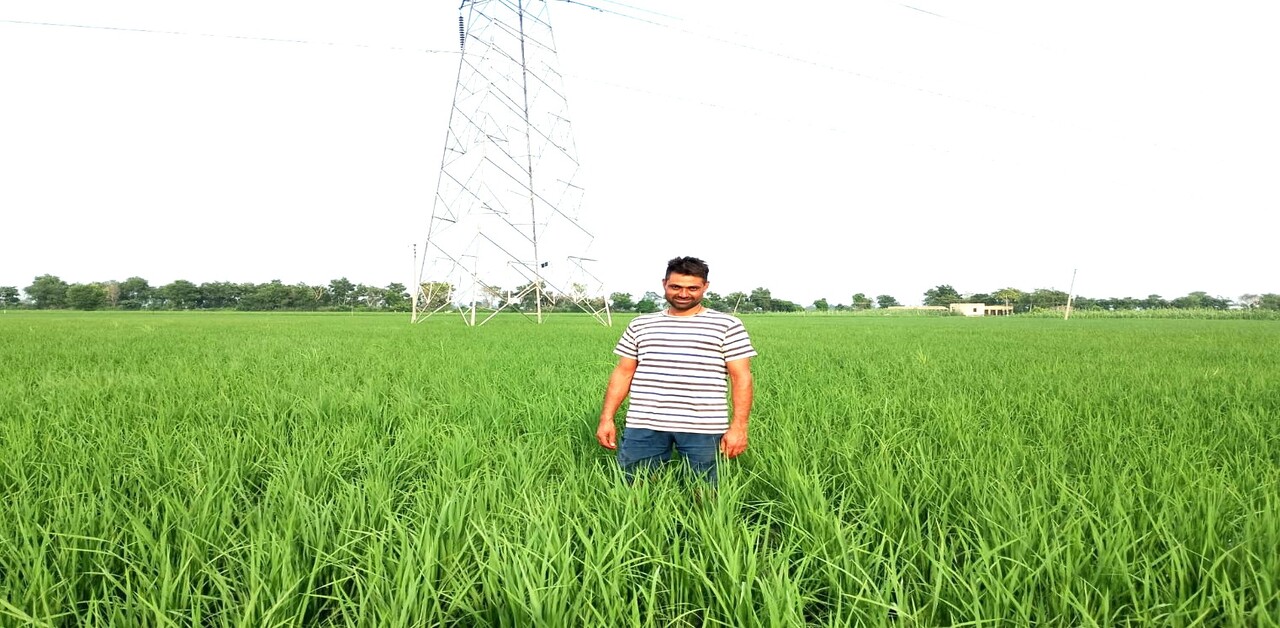Why In the News?
The 20th installment of the Pradhan Mantri Kisan Samman Nidhi(PM Kisan) scheme was issued by the Prime Minister of India on August 2, 2025, from Varanasi, Uttar Pradesh.
Table of Contents
What is PM Kisan?
Pradhan Mantri Kisan Samman Nidhi(PM Kisan) Yojana is under the Ministry of Agriculture and Farmers Welfare.
It has been operational since 1 December 2018. It was announced in the Union Budget on 1 February 2019. The Prime Minister of India officially launched it on 24 February 2019 from Gorakhpur, Uttar Pradesh.
It is a Central sector scheme with 100 % funding from the Government of India.
It is for all the landless farmers with certain exclusions.
Under this scheme, 6000 Rs is given per year in three equal installments of 2000 Rs each four months.
To check the status or apply for the PM Kisan scheme, you can visit this link.
| PM Kisan | Apply |

Objective of PM Kisan Yojana
- Financial Support: To give direct income support to the small and marginal farmers.
- Limit the Debt to the Farmers: To allow farmers to avoid taking loans for the necessities of farming.
- Support the idea of Sustainable Farming: To facilitate investment in quality inputs and modern techniques.
- Stimulate the rural economy: It increases the purchasing power of rural households.
Eligibility for PM Kisan
Every farmer is not eligible to receive the PM-KISAN. The scheme is primarily aimed at marginal and small farmers with cultivable land.
Important eligibility requirements include:
1. Any Indian citizen should be the beneficiary.
2. The family needs to be able to cultivate its land.
3. The husband, wife, and minor children are referred to as the family.
Farmer’s exclusions:
- Farmers and the present legislature/Ministers in the Union or state government.
- All the farmers who paid income tax in the last financial year.
- Professionals like doctors, engineers, CAs, Lawyers, etc.
- All the Serving or retired officers of states/central/PSUs, etc.
- All the pensioners whose monthly income is 1000 or more.
- All the institutional landholders, like government farms
- Farmers who hold constitutional posts under the central or state governments.
- Farmers and present chairmen of district panchayats/municipal corporations.
If you want to purchase a book of “The Atomic Habits“, you can visit here.

How does it works
The PM-KISAN will be implemented through the coordination of the Union Government and the State Governments.
It is done in the following way:
1. The farmers can apply either through the local authorities or through the internet portal.
2. The state checks on the ownership and eligibility of land.
3. Approved beneficiaries get the amount directly to their bank accounts in three parts.
The amount is usually credited in the following periods:
1st installment: April-July
2nd installment: August to November
3rd installment: December to March
Achievements of PM Kisan Scheme
Since its inception in 2018, the PM-KISAN program has had a significant impact:
- More than 11 crore farmers have claimed to have benefited from the program.
- Over three lakh crore has been borrowed thus far.
- It was able to help a lot of farmers get through the economic effects of COVID-19.
- It lowered the amount of money that small farmers were loaned by private moneylenders.
- DBT and Aadhaar-based verification have increased transparency.
Technological Integration
The government has been able to make PM-KISAN effective and transparent through technology:
1. Through the PM-KISAN Mobile App, farmers can check on the status of their payments.
2. Biometrics like Aadhaar seeding ensure that benefits are distributed to the intended recipient.
3. Farmers may be able to resolve their issues quickly with the assistance of the online grievance redress system.
4. Duplication and fraud are reduced as a result of the inclusion of land records.

Challanges
The PM-KISAN program has achieved success, but it faces a few obstacles:
1. Errors in Exclusion: A lack of documentation may result in the exclusion of genuine farmers.
2. Problems with Land Ownership: Because they do not own the land, sharecroppers and tenants frequently do not qualify.
3. Awareness: The application procedure is still unknown to many farmers, particularly those in rural areas.
4. Discrepancies in the data: Inaccuracies in Aadhar information or land records can hold up payments.
Conclusion
The PM-KISAN program is a game-changer for farmer welfare and rural population empowerment. Millions of farming families have already benefited from the scheme, despite the need to address some implementation issues.
It demonstrates the determination and support of the government to properly acknowledge, respect, and pay attention to the Indian economy’s foundation.
It may have a significant impact on the future of agricultural sustainability, economic justice, and rural development due to the scheme’s ongoing improvement and expansion.

